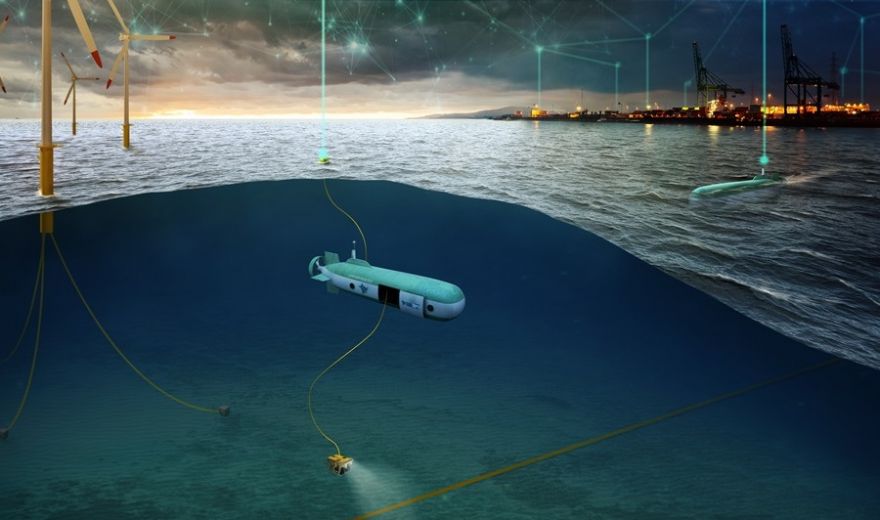
Aberdeen-based
HonuWorx, an offshore robotics company, with support from the
Offshore Renewable Energy (ORE) Catapult and
Innovate UK, is on track to deliver a revolutionary robotic concept that could transform subsea maintenance.
Loggerhead is a versatile system that can provide a sustainable and cost-effective solution for subsea work that requires physical intervention, such as the maintenance of offshore energy infrastructure. The system features a control centre connecting geographically distributed stakeholders to the operation, and a submersible mothership that serves as a mobile power and communication hub for remotely-operated vehicles (ROVs) – worker robots that will carry out the subsea work.
Loggerhead can deploy and operate ROVs at underwater locations, and data on its movements would be accessible from anywhere in the world. HonuWorx will engage with prospective customers to understand their requirements and refine the design of Loggerhead to enable crewless operations.
HonuWorx CEO Lee Wilson said: “HonuWorx was founded to scale up the use of subsea robotics across the entire ocean economy. With decades of experience in subsea operations and maintenance, our team recognised that today’s models are heavily reliant on large support vessels that are no longer sustainable from a cost or environmental perspective. We need entirely new approaches to deploy underwater robots economically to enable growing sectors like offshore renewables to attain cost parity.
“Multiple stakeholders can access the data during a Loggerhead mission at any given time – including pilots, the end client, the manufacturer – and this goes way beyond any concept currently available, as it does not require a physical control room or onshore building to house a crew. Lowering the cost of subsea maintenance will have a large impact on the floating wind market, where we expect to see an exponential increase in subsea infrastructure, all requiring regular inspection.”
While ROVs are currently used for offshore wind farm inspections, they rely on large, crewed, diesel-powered vessels for transportation. Due to the use of these vessels, a 21-day inspection can cost up to £1.5 million and emit more than 500 tonnes of CO
2.
Dr Cristina Garcia Duffy, technical director at ORE Catapult, said: “To reach our ‘net zero’ targets at sector level, we must seek to adopt new technologies and systems solutions that address all aspects of our operations. HonuWorx’s Loggerhead project provides a fantastic solution that has the potential to revolutionise the way ROVs are deployed while achieving a significant reduction in CO
2 emissions for operations and maintenance activities. We are very excited to help bring this concept to life at ORE Catapult.”
The Loggerhead project will build on the success of HonuWorx’s Ridley Project, that looked at subsea robotics as a sustainable and cost-effective solution for offshore wind farms. HonuWorx plans to produce a scaled Loggerhead proof of concept by the end of 2022.